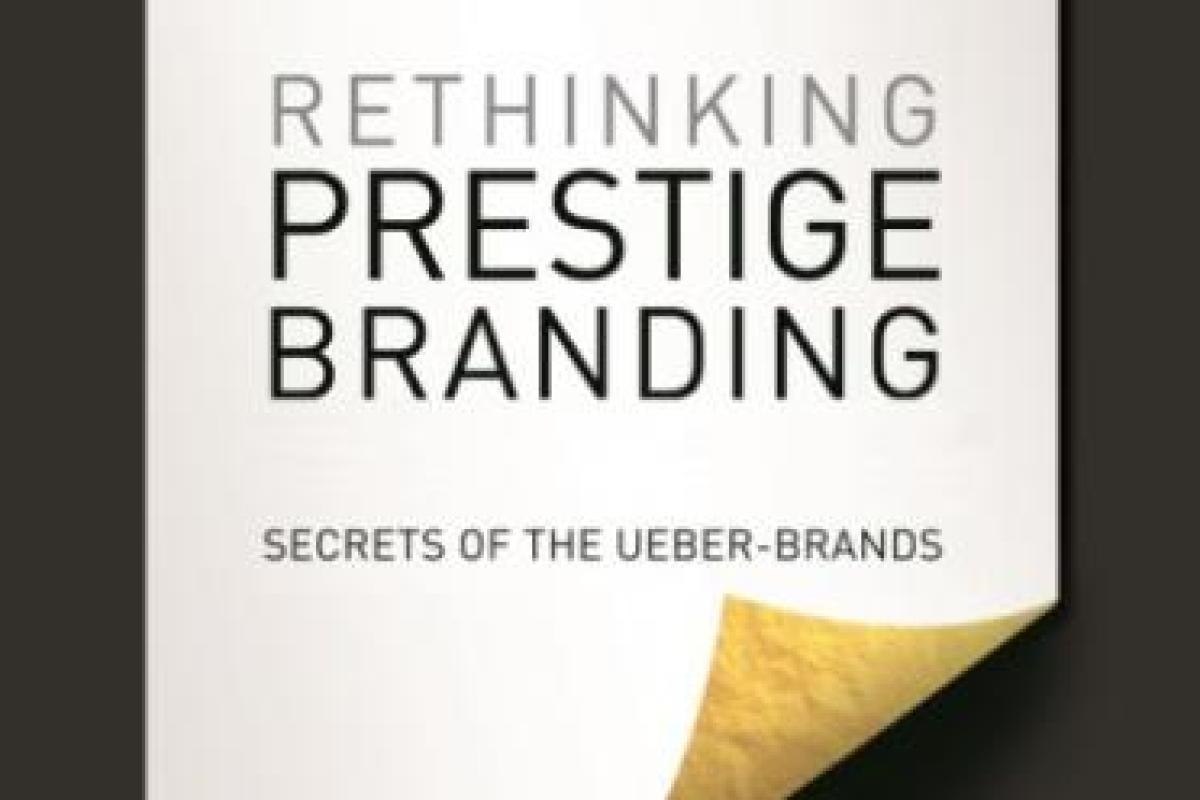What does it take to build and grow a prestige brand in today’s changing consumer environment?
Rethinking Prestige Branding explores this question and lays out a model to guide marketers in creating, maintaining and growing a brand that justifies premium pricing.
The authors JP Kuehlwein, an experienced Procter and Gamble marketer, currently Executive Vice President at Frédéric Fekkai and Wolfgang Schaefer, Chief Strategic Officer at SelectNY, are well-placed to have a point of view on the topic. They successfully argue that there is a ‘new kind of prestige’ that remixes traditional luxury strategies: today, for example, prestige can come from ‘knowing rather than having’, ‘less is more’ and consumers increasingly look for real magic in the midst of a bombardment of banal and obvious choices.
Any marketer will enjoy the exploration of a wide range of brands: from the everyday premium positioning of brands such as Innocent to ultra-premium fashion brands and the book is enjoyable and easy to dip into for inspiration. However, this book also offers a lot more than a typical collection of anecdotes and cases – the particular value of the book is that it is based on analyzing 100+ case examples to produce a structured model of prestige brand-building with 7 building blocks.
The authors lead us systematically through the 7 building blocks: a strong mission; balancing inclusivity with exclusivity; selling with seduction; myth-making and deep brand meaning; products as a manifestation of the myth; living the brand with the right culture and organization; growth without undermining the brand. It is refreshing to look at prestige branding through the lens of a structured model and not just through stories about creative ‘genius’.
Three particular aspects of the book stand out for me:
1. A rich bank of (European) case examples: the case examples go well beyond the usual suspects and include many European brands such as Laguiole, Brunello Cucinelli and Freitag as well as different takes on familiar examples like Apple, Absolut and MAC.
2. Links to deep brand meaning: my favourite part of the book is Chapter 4 “From myth to meaning”. This chapter includes some great examples of brands that bring their meaning to life through stories (Moleskine is my own favourite). There is a great overview of the links among storytelling, semiotics, archetypes and myth-making. Kuehlwein is one those rare marketers who genuinely understands storytelling and shares my own beliefs in the links between archetypes, myths and neuroscience
3. Leadership and business culture behind the brand: underpinning the model is the importance of having a mission and a clear point of view. Additionally, based on their analyses, the authors recommend two very specific leadership approaches that work well for prestige brands: the dream team (hands-on and visionary - example Reinold Geiger and Olivier Baussan at L’Occitane); the protective mentor (who prevent a brand being swallowed by a big parent company - the role played by Lindsay Owen-Jones when L’Oreal acquired Kiehl’s).
Having reflected on Schaffer and Kuehlwein’s seven dimensions of prestige branding, I’d like to incorporate the model into how we research and develop prestige brand strategies. That raises some interesting challenges and I’d welcome any ideas.
For example, how can we research consumers and obtain insights around delicate balances of tensions such as inclusion versus exclusion? Or, one of my daily obsessions: how do we combine both expert analysis of brand meaning and deep consumer insights to guide brand strategies?
Finally, although I have no interest to declare in this book, it is always nice to be name-checked in the acknowledgements!
For example, how can we research consumers and obtain insights around delicate balances of tensions such as inclusion versus exclusion? Or, one of my daily obsessions: how do we combine both expert analysis of brand meaning and deep consumer insights to guide brand strategies?
Finally, although I have no interest to declare in this book, it is always nice to be name-checked in the acknowledgements!
Sandra Pickering is Founding Partner of opento.com, specialising in applying psychology to brand strategy and all aspects of brand-building.
